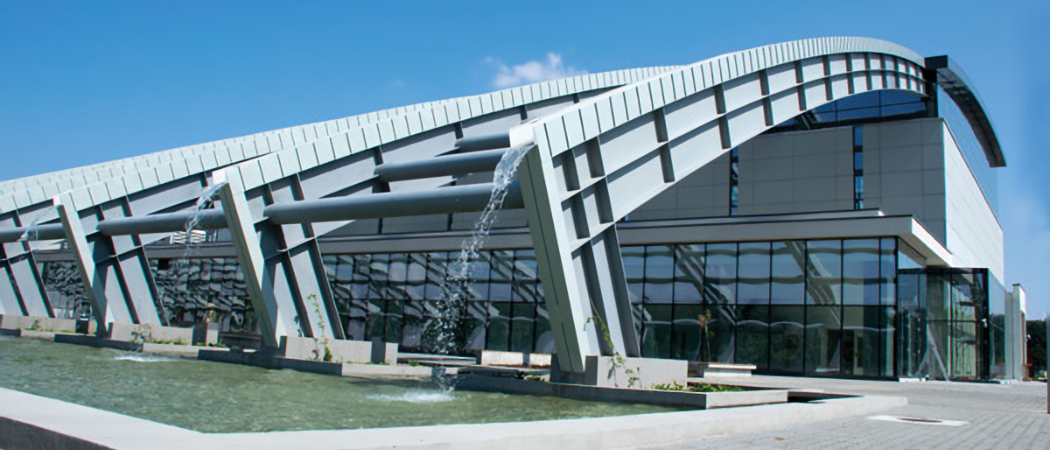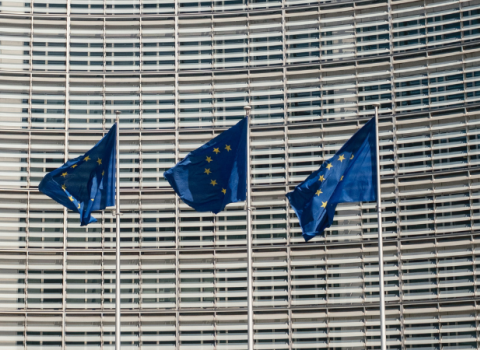Concentrated diplomatic efforts win the day as Romania is made a ‘founding observer’ in the ELI ERIC consortium. The move is a huge step forwards after a long-running row that seriously held up the largest research infrastructure in eastern Europe

The Extreme Light Infrastructure Nuclear Physics (ELI-NP) facility in Măgurele, Romania. Photo: ELI ERIC
Romania is set to become a “founding observer” of ELI ERIC, a European consortium of advanced laser research facilities, marking a big step towards more normal relations with international research partners, after a legal dispute that has seriously delayed the full implementation of the largest research infrastructure in eastern Europe.
In a vote on Tuesday, ELI ERIC voted to admit Romania – which is home to the Extreme Light Infrastructure Nuclear Physics (ELI-NP) project - as an observer, following unanimous support from its general assembly.
Speaking after the vote, ELI ERIC director Allen Weeks said, “Significant commitment has been shown at the political level in Romania to speed up bringing ELI-NP closer to ELI ERIC”.
On the Romanian side, this is seen as a “first step” on the way to it becoming a full host member of ELI ERIC, according to a government letter seen by Science|Business, that was submitted to the consortium on 30 May and which details Romania’s desire to join as a founding observer.
The letter was signed by Sorin Costreie, Romania’s high representative for ELI-NP, and Sebastian Burduja who until this week was the country’s minister of research, innovation and digitalisation.
Both acknowledge the challenges the government has faced over the past few years to ensure the ELI-NP lab in Bucharest and the Romanian government are fully aligned with the objectives of ELI ERIC.
Since he took up the role of research minister a year ago, Burduja built on the work of his predecessor Ciprian Teleman to repair Romania’s reputation in the international research community. In addition to struggling to finalise all components of ELI-NP in time, Romania had also failed to pay its yearly contributions to the European Space Agency (ESA).
According to Burduja, it took “significant efforts” to clear the ESA debt and reestablish normal relations with the space agency. He also acknowledged the years-long “diplomatic efforts” required to reinstate trust with international partners in the ELI project. “Romania has exceptional minds, a good reputation and now we have managed to fix a historical injustice, coming back as a [observing] member in [ELI ERIC],” Burduja said in a statement on Wednesday.
Costreie echoed this, saying the positive vote means Romania has finally regained the trust of international partners and shown the country has the capacity to coordinate and implement big research projects. “On the other hand, it’s a tough lesson from which we can learn a lot,” said Costreie.
Burduja is expected to be appointed the new minister of energy following a pre-agreed change in government that took place this week. The 32-year-old Bogdan-Gruia Ivan has been nominated as his replacement.
Observer status
While the status is short of full membership, it still signifies a huge step forwards. Founding observers have the right to appoint two representatives to attend general assembly meetings and Administration and Finance Committee meetings, but without voting rights.
Usually, countries with this status do not need to pay membership fees for three years, but Romania has expressed an interest in doing so in a sign of good will. The country will also be expected to pay additional administrative costs.
The ELI ERIC consortium was originally supposed to bring together three Extreme Light Infrastructure facilities based in Czechia, Hungary and Romania. But a contract dispute over the construction of a gamma beam at the ELI-NP facility in Romania disrupted this.
It led to litigation being launched in 2018 between Romania’s national institute of physics and nuclear engineering IFIN-HH, which is responsible for the implementation of the ELI-NP project, and the EuroGammaS consortium that was awarded the contract to build the gamma beam. The Italian Institute of Nuclear Physics (INFN) is one of the leading partners in the EuroGammaS consortium and the fall out led to bad relations building between Italy and Romania on the research front.
The whole row resulted in Romania being excluded from the ELI-ERIC consortium, which was officially launched in 2021 with four founding members, Czechia, Hungary, Italy and Lithuania.
Good relations restored
The general feeling among ELI-ERIC’s general assembly is of a return to good relations with Romania. Alongside diplomatic efforts by the Romanian government, ELI-NP has also been participating in a Horizon 2020-funded project aimed at transitioning the three ELI facilities to sustainable operations. The Romanian facility also joined the first and second ELI ERIC calls, with a “significant amount of interest” shown in using ELI-NP’s equipment, which includes 100TW and 10PW lasers, according to Weeks.
But it has taken a long time to get to this point. Complications began in 2015 when the Franco-Italian consortium EuroGammaS refused to complete work on the gamma beam, a secondary piece of equipment to the main high intensity laser system at ELI-NP, because it said the building was not compliant with the technical specifications of the equipment.
IFIN-HH was unhappy with this and asked for delay penalties and threatened to cancel the €67 million contract, while EuroGammaS filed a legal suit in a court in Bucharest asking for an extension of the contract and reimbursement of all the money it had to pay in fines for late delivery.
The equipment which was part of the first stage of the €67 million contract, has been sitting in unopened wooden crates at ELI-NP.
After the contract with EuroGammaS was cancelled, a US company, Lyncean Technologies, was handed a €42 million deal to take over and complete construction on the gamma beam. But in another turn, Lyncean filed for bankruptcy in November last year, leaving the gamma beam still unfinished.
Last month, EuroGammaS was invited back to the negotiating table in a bid to ensure the gamma beam is delivered by the end of this year. The value of the deal is still under discussion, but it will allow EuroGammaS to claw back the penalties imposed when the contract was cancelled. In addition, ELI-NP will have to adapt the building so the gamma equipment can be installed according to EuroGammaS’ specification.
The ELI-NP project has already gone through two phases of EU funding, and cannot be “phased” again. This means the facility needs to be completed by the end of 2023 to maintain its EU funding. There is a two-year buffer in which, if the project is not fully completed, the Romanian government can step in and fund it with its own resources.
If it is not completed after that buffer, which means by the end of 2025, Romania risks a heavy penalty from the European Commission. The facility is being built at a total cost of €300 million, most of which is from EU structural funds, with only a small portion being covered by the Romanian government.





 A unique international forum for public research organisations and companies to connect their external engagement with strategic interests around their R&D system.
A unique international forum for public research organisations and companies to connect their external engagement with strategic interests around their R&D system.